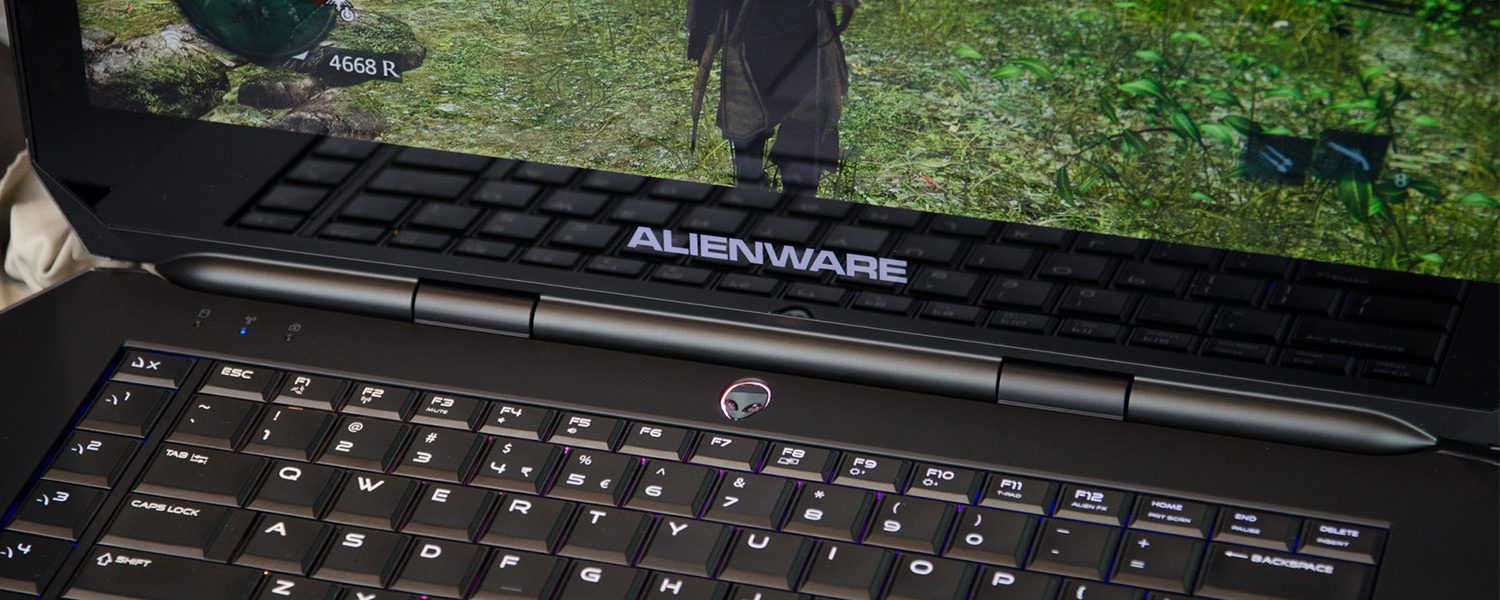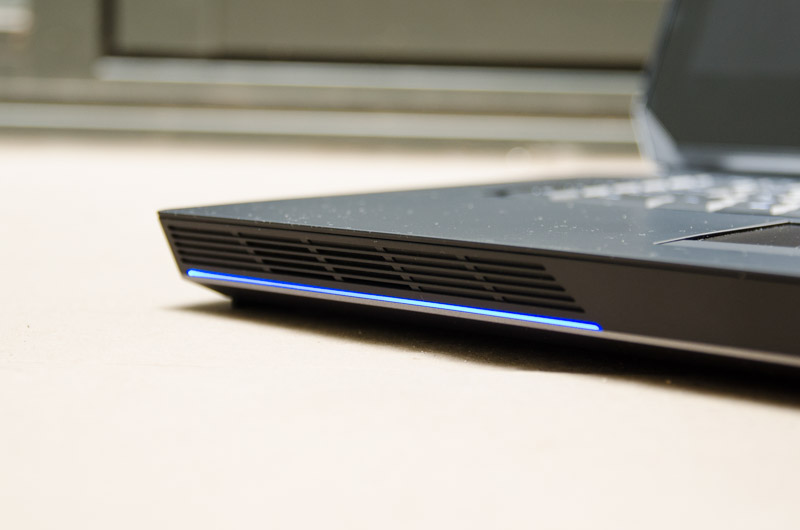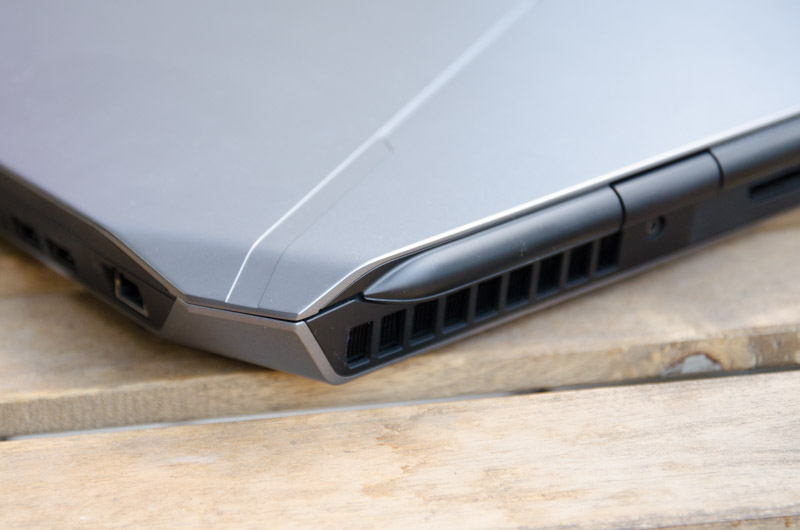A few months ago I reviewed the latest Alienware 13, which was designed as a mid-range gaming laptop that could be given a serious performance boost by being plugged in to the optional Graphics Amplifier. While the idea of an external GPU for a laptop is promising, the chunky design of the Alienware 13 paired with merely average hardware didn't make the system as attractive for laptop gamers as I would have liked.
Enter the new Alienware 15. This much larger gaming laptop from Dell's enthusiasts brand is a completely different story. Designed for high-end gaming, the Alienware 15 packs powerful hardware rivalling decent gaming desktops, including flagship mobile GPUs from both AMD and Nvidia. And like other Alienware machines, the 15 is highly customizable, with pricing ranging from $1,200 up to $2,700 depending on the hardware inside.
To make sure we got the message that the Alienware 15 means business, Dell sent us the top-spec model to review. This means a 15.6-inch Ultra HD display, an Nvidia GeForce GTX 980M dedicated GPU, an Intel Core i7-4710HQ processor, 16 GB of RAM, and 1.5 TB of storage split between a hard drive and solid state. This is one seriously powerful laptop; the most powerful that we've reviewed to date.
I'll kick off by describing what the Alienware 15 is not. It's not a thin, light or portable laptop. It's not something you'll want to move very often. It's not going to replace your work laptop that you take on the train every day. This is a beastly, heavy behemoth designed to sit on your desk for extended gaming sessions, with the option of portability for LAN parties and other gaming events.
The system weighs 3.2 kilograms (7.1 lbs) and clocks in at 34.4mm thick, well over your standard 15-inch laptop. However compared to the current crop of gaming laptops, the Alienware 15 sits somewhere in the middle: you'll find systems from MSI, Maingear, Asus ROG, and others that are heavier or lighter, usually with an accompanying shift in price.
The thickness and weight of this laptop can be attributed to two things. First, the battery inside this system is a beefy 92 Wh, which is larger than similar class laptops and hopefully large enough to last longer than an hour during gaming.
Also, the cooling system for the powerful CPU and GPU - which intakes from the bottom and exhausts out two large vents on the back - requires a decent amount of space for heatsinks to cool effectively.
Design-wise, the Alienware 15 is styled in a similar fashion to the 13. It features an angular body with a silver, metallic lid that this time is actually made of lightly-brushed aluminium (rather than plastic). Thanks to the use of metal, this entire display assembly is tough and exhibits no flex when using the touchscreen. Like other Alienware systems, the lid features AlienFX lighting in a Y-shaped pattern, complete with a glowing alien head.
The main body of the Alienware 15 is made of soft-touch matte plastic, which looks reasonably good, but more importantly feels great while using the keyboard. This plastic wraps around the sides of the body where you'll find the ports, though it loses the soft touch coating. Meanwhile, the display is protected by smooth, glossy glass, at least on the touchscreen model I received to review.
The design of the Alienware 15 overall isn't as slick or classy as I would like for a product of this price point. This is mostly due to the healthy dose of 'gamer' style applied around the system, which I'm not a massive fan of, but is appreciated by the target demographic of this kind of laptop. Use of standard materials doesn't make it look like a $2,700 laptop either, though rest assured the hardware inside is impressive.
The front section of the body is where you'll find the stereo speakers, above two strips of AlienFX lighting. These speakers are loud and powerful, with quality better than what you usually get with laptop speakers. There's still a general lack of bass, which makes the speaker system sound unbalanced, so I'd recommend a good pair of external speakers or headphones if you want to take your gaming experience to the next level. However, the speakers are fine for casual gaming or watching videos away from your audio setup.
Around the edges, the selection of ports on the Alienware 15 is nearly identical to the Alienware 13. On the left you'll find the power port, two USB ports, and two audio jacks. On the right is another two USB ports and a gigabit Ethernet port. Finally, on the back you'll find HDMI, mini DisplayPort, and the proprietary PCIe x4 connector for the Graphics Amplifier.
As for AlienFX lighting, I've mentioned a few zones in this review already: the lid and below the speakers. But it doesn't stop there, as you'll also find customizable lighting in the Alienware logo below the display, the status LEDs in the top-left corner of the keyboard area, the alien head power button, the keyboard backlighting itself, and even the trackpad. All of these zones are fitted with RGB lighting, so you can choose whatever color you like for each area in the AlienFX settings.
When set up to meet your desires, the lighting around the Alienware 15 can look quite cool. Lighting in the trackpad is definitely overboard though, so this was the only zone I disabled.
The base of the Alienware 15 is raised a few millimeters by rubber mounts to allow for airflow to the large section of vents along the bottom panel. This cooling setup is quite effective for gaming on a desk, but less so when the laptop is constricted by fabric such as when the laptop is placed on a bed or couch. The bottom area also features a removable panel that provides access to the replaceable drives inside.










